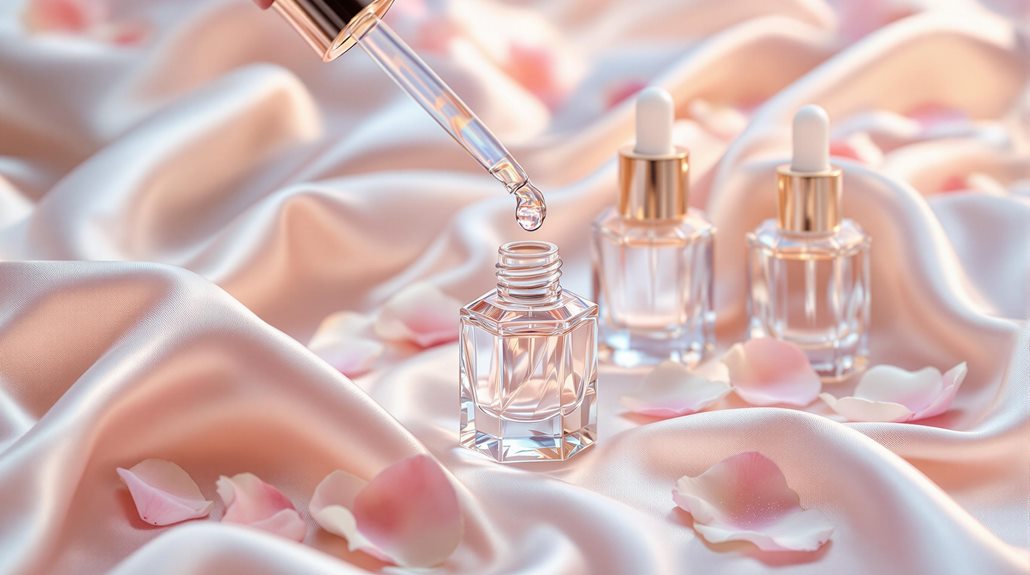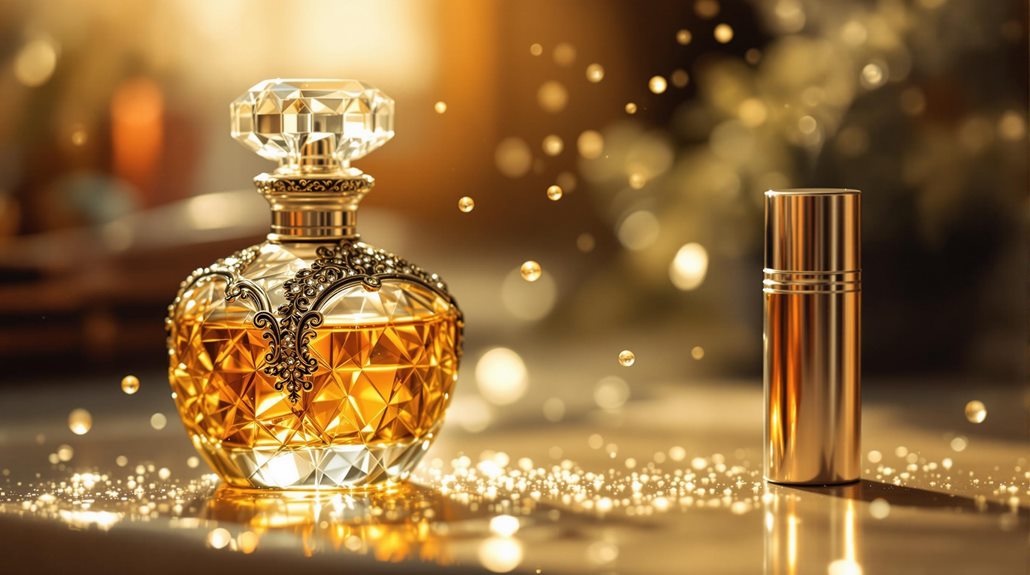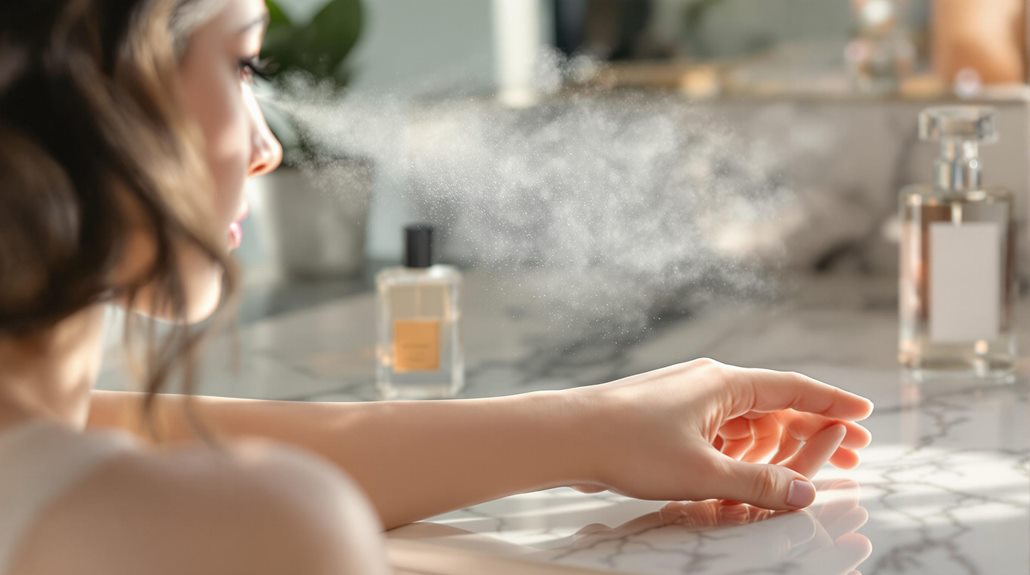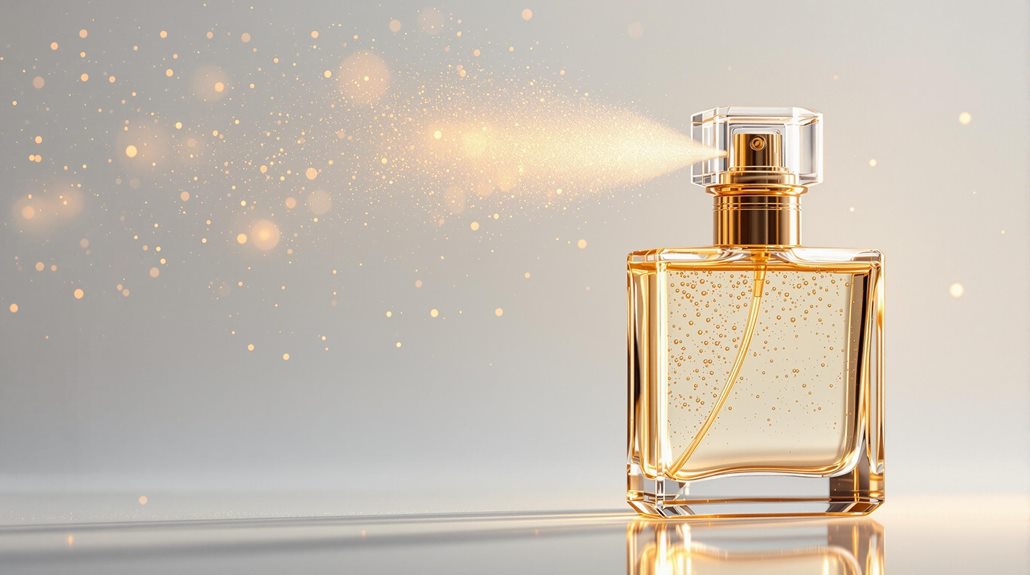What Is Men's Perfume Called? The Difference Between Cologne and Perfume
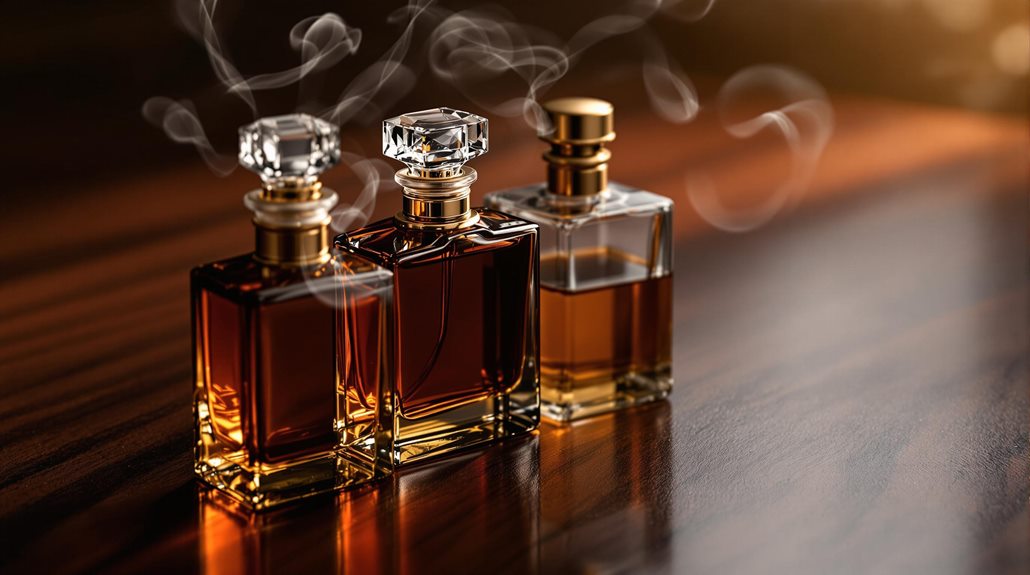
While men's fragrances are commonly called "cologne," this term actually refers to a specific concentration level rather than gender. Cologne contains 2-4% fragrance oils, making it lighter and more suitable for daily wear, while perfume has over 20% concentration for a more intense, longer-lasting scent. You'll find various concentration options between these extremes, like eau de toilette (5-15%) and eau de parfum (15-20%). The gender associations between cologne and masculinity are relatively recent marketing developments - before the 1930s, fragrances weren't marketed by gender. There's much more to investigate about choosing the right concentration for your needs.
Understanding Fragrance Concentration Levels
Fragrance concentration determines how long a scent will last and how intensely it'll project on your skin. When you're shopping for fragrances, you'll encounter different concentration levels that substantially affect both performance and price.
At the top of the concentration hierarchy, you'll find perfume with over 20% oil concentration, providing the most powerful and long-lasting fragrance experience. Eau de parfum follows with 15-20% fragrance oils, offering you a balanced option that lasts 4-5 hours on your skin. For a lighter touch, eau de toilette contains 5-15% fragrance concentration, making it more affordable while still providing decent longevity.
If you prefer subtle scents with an alcohol base, eau de cologne might be your best choice, containing just 2-4% fragrance oils and featuring fresh, citrusy notes that last up to 2 hours. For the lightest possible option, especially if you have sensitive skin, eau fraîche provides a gentle 1-3% concentration in a water-based formula. Understanding these higher concentration levels helps you make informed decisions based on your preferences for strength and longevity.
History Behind Men's Fragrances
While both men and women have worn scented products throughout history, the distinction between men's and women's fragrances didn't emerge until the late 19th century. Before this period, unisex eau de colognes and lavender-based scents were commonly used by everyone, regardless of gender.
The modern men's fragrance industry took a significant turn in the 1930s with the introduction of "Pour un Homme" by Caron, which became the first fragrance specifically targeted towards men. This launch marked a crucial moment in the evolution of gendered scents, solidifying the separation between cologne for men and perfume for women.
You'll find that the gender associations today's society is familiar with - cologne being masculine and perfume being feminine - are relatively recent developments in fragrance history. These distinctions have become deeply ingrained in marketing and consumer perception, though they're more about cultural norms than actual differences in the products themselves. Today's men's fragrance market has expanded well beyond traditional cologne, offering various concentration levels and diverse scent profiles that challenge these historical gender boundaries while still maintaining their masculine marketing appeal.
Cologne Versus Perfume Basics
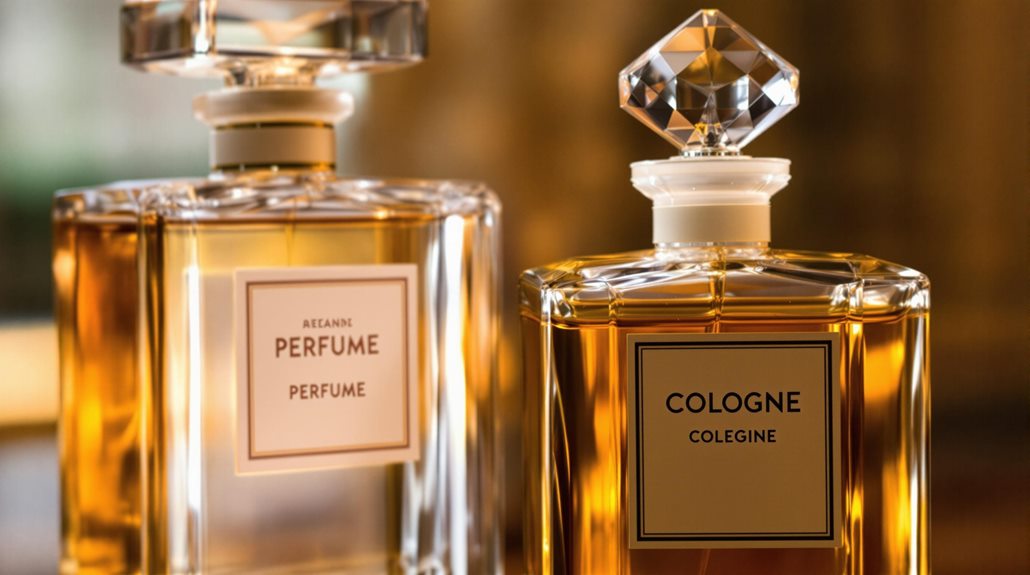
Understanding the key differences between cologne and perfume helps clear up common misconceptions in the fragrance world. The main distinction lies in their fragrance concentration levels, which directly impacts how they smell and when you should wear them.
When you're choosing between cologne and perfume, consider that cologne contains just 2-8% aromatic compounds, making it lighter and more suitable for daily wear. You'll find its invigorating scent perfect for casual settings, though it won't last as long as stronger alternatives. Perfume, on the other hand, packs a more powerful punch with 20-30% concentration, imparting an intense, long-lasting fragrance that's ideal for special occasions.
If you're looking for a middle ground, consider eau de toilette, which contains 5-15% fragrance concentration. It offers a balanced intensity that works well for various situations. Despite common belief, cologne isn't simply the male version of perfume - it's a distinct category based on concentration. The intensity of your chosen fragrance should match your needs: cologne for everyday freshness, perfume for lasting impact, or eau de toilette for versatile wear.
Gender Marketing in Fragrances
The gendered division of scents wasn't always the norm in perfumery. Before the late 19th century, fragrances like eau de cologne and lavender scents were marketed to everyone, regardless of gender. The scenery changed dramatically when dedicated men's fragrances emerged, starting with Caron's "Pour un Homme" in the 1930s.
You'll notice that modern fragrance marketing heavily relies on gender distinctions, with cologne typically associated with masculinity and perfume with femininity. This marketing approach has shaped how you perceive different types of scents, even though there's no inherent gender in fragrance compositions themselves. The terms "eau de cologne" and "eau de parfum" actually refer to concentration levels rather than gender-specific products.
Today, you're seeing a shift in how fragrances are marketed. Many brands are moving away from traditional gender categories, recognizing that scent preferences aren't determined by gender. This evolution reflects a broader cultural change, with more companies embracing gender-neutral marketing approaches. Despite this progress, you'll still find that many mainstream fragrance brands continue to market their products along traditional gender lines.
Choosing Your Signature Scent
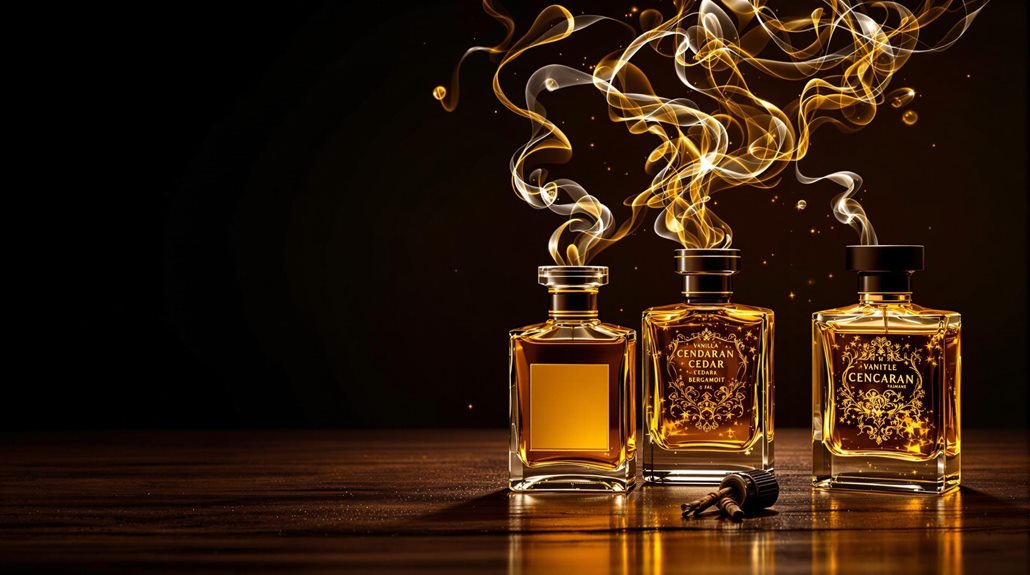
Moving beyond gender-based marketing, selecting your signature scent comes down to personal taste and lifestyle. The right scent should reflect your personality and make you feel confident, regardless of whether it's marketed to men or women.
When choosing between different types of fragrances, consider how long you want the scent to last longer. Higher concentration fragrances will have more staying power, which makes a significant difference in how the scent develops throughout your day. Start by exploring various fragrance families to understand what appeals to you – whether it's woody, fresh, citrus, or oriental notes.
Don't rely solely on initial impressions from paper testers. Instead, test fragrances directly on your skin to experience how they evolve over time. Your body chemistry can affect how a scent performs, so what smells great on someone else might not work for you. Consider starting with sample sizes or travel sprays before investing in full bottles. You can also create depth by layering complementary scented products, like matching your body wash and deodorant to your chosen fragrance. This approach helps build a consistent, personalized scent profile that truly represents you.
Fragrance Notes and Families
Fragrance composition breaks down into distinct families and note structures that create a scent's unique personality. Whether you're exploring different types of cologne or perfume, understanding these elements will help you make informed choices about your fragrances.
The main fragrance types include woody, floral, citrus, and gourmand families, each offering distinct characteristics that appeal to different preferences. When you're considering the Difference Between Cologne and any other type of perfume, it is crucial to focus on how these families align with your personal taste.
Your chosen scent develops in layers, starting with top notes that provide the initial impression but quickly fade. The middle or heart notes emerge next, forming the fragrance's core character. Finally, the base notes surface, providing lasting depth and richness to the overall scent profile. To find your ideal fragrance, you'll want to sample various options and pay attention to how they evolve on your skin. Each fragrance type interacts differently with individual body chemistry, so what works for someone else might not work for you.
Application and Longevity Tips
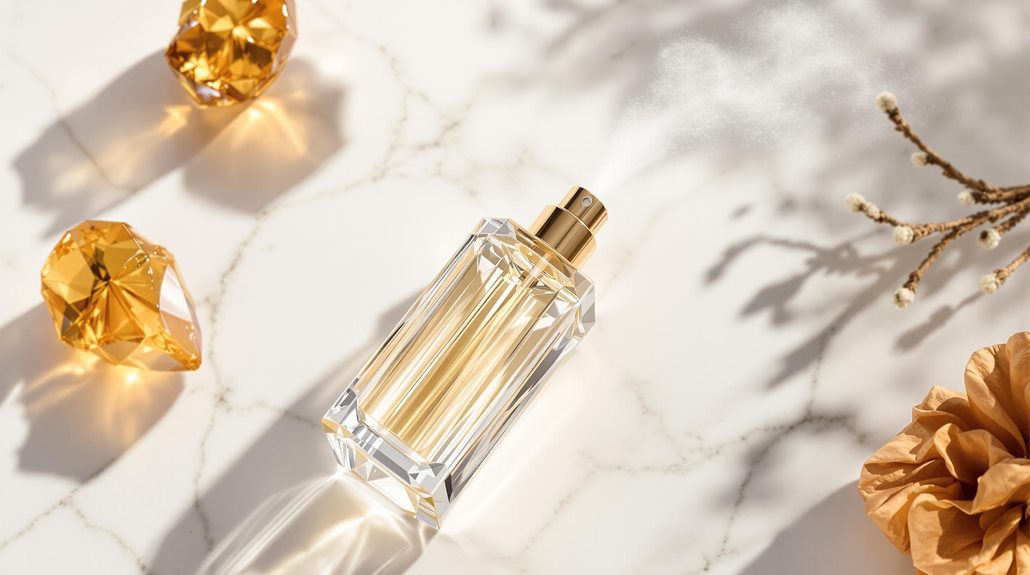
Commanding the art of fragrance application can considerably enhance your scent's performance and durability. Whether you're using an eau de toilette with a lower concentration or an eau de parfum (EDP), it's important to understand proper application techniques.
To maximize your fragrance's longevity, apply it to your pulse points - specifically your wrists, neck, and inner elbows. These warm areas help activate and diffuse the scent throughout the day. While you might be tempted to spray your fragrance directly on your clothes, this can damage fabrics and isn't as effective as skin application, based on the concentration of the product.
You can extend your scent's staying power by layering complementary products. Start with a matching body wash, follow with a scented lotion, and finish with your cologne or EDP. To maintain your fragrance's potency, you'll need to reapply it a few times during the day. Additionally, proper storage is essential - keep your fragrances in a cool, dry place away from direct sunlight. This practice not only preserves the scent's integrity but also extends its shelf life immensely.
Conclusion
You've now learned that men's fragrances aren't limited to just cologne - they come in various concentrations, from eau fraiche to perfume. Whether you choose cologne or perfume depends on your preferences for scent strength and longevity. Don't let gender marketing restrict your choices. Focus on finding a fragrance that matches your personality and lifestyle, and remember to apply it correctly for the best results.

